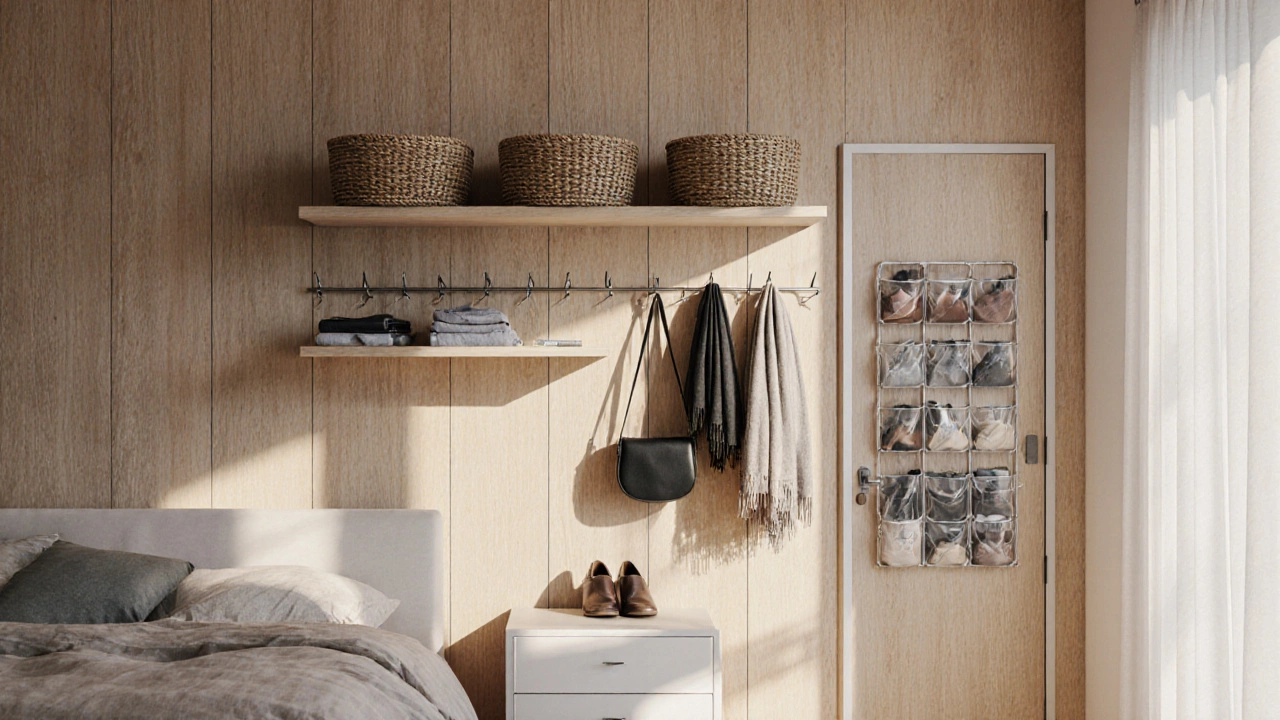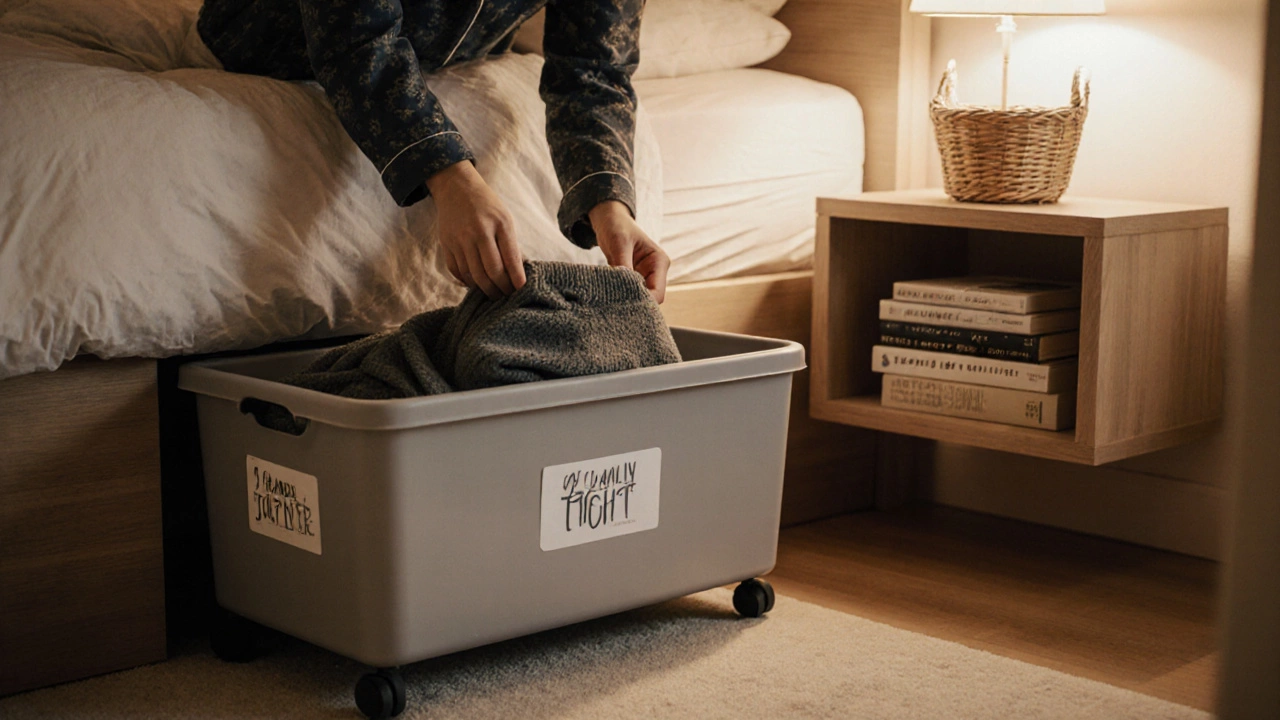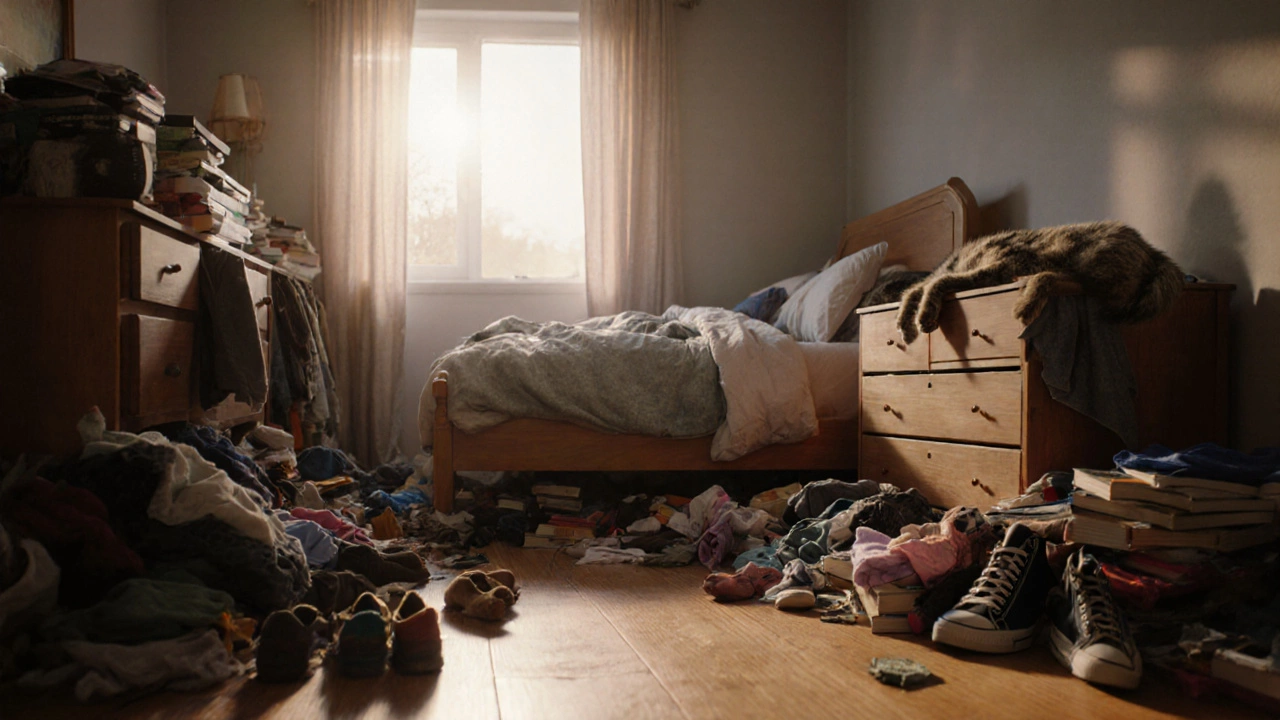Bedroom Storage Solution Finder
Find Your Perfect Storage Solution
Select your bedroom type, budget, and storage needs to get personalized recommendations.
When the floor is covered with shoes, the dresser is bursting, and there’s barely enough room to swing a cat, the bedroom feels more like a storage unit than a place to relax. Bedroom organization is the practice of arranging furniture, belongings, and accessories so the space feels open, functional, and calm. In this guide you’ll learn how to take back control, pick the right storage solutions, and keep the chaos at bay without spending a fortune.
Assess the Space and Your Habits
Before you buy any organizer, spend a few minutes walking around the room with a notebook. Sketch the layout or take a quick photo and note:
- Which walls are free for shelves?
- How much floor space is actually usable?
- What items you use daily vs. rarely?
- How often you add new stuff (seasonal clothes, tech gadgets, souvenirs)?
Understanding the bottlenecks helps you choose solutions that match the room’s dimensions and your lifestyle. For example, a small studio benefits from vertical storage, while a larger master bedroom can afford a few multi‑functional pieces.
Step 1: Declutter First
The golden rule of storage solutions is: you can’t store what you don’t need. Set a timer for 30 minutes and go through each category - clothes, books, accessories - using the “keep, donate, toss” method.
- Keep: items you use weekly and love.
- Donate: good condition items you haven’t used in six months.
- Toss: broken, stained, or expired things.
When you finish, you’ll have a clearer picture of how much storage you really need. A common surprise is that most people own 30‑40 % more clothing than they actually wear.
Step 2: Choose the Right Storage Solutions
Now that the clutter is trimmed, it’s time to match storage types to the items you kept. Below is a quick comparison of the most common bedroom storage options.
| Option | Typical Cost (USD) | Space Required | Best For | Installation |
|---|---|---|---|---|
| Under‑bed storage bins | 15‑40 | Floor space under the bed | Seasonal clothes, shoes | No tools |
| Closet organizer system | 80‑250 | Inside existing closet | Everyday clothing, accessories | Mounting brackets required |
| Wall‑mounted shelves | 25‑120 per unit | Vertical wall space | Books, decorative boxes, plants | Drill & anchors |
| Multi‑functional furniture | 150‑600 | Floor footprint | Bedrooms that need extra seating or a desk | Assembly only |
| Rolling storage carts | 30‑100 | Floor space, can move | Makeup, tech accessories, linens | No tools |
Pick one or two options that cover most of your kept items. If you have a low ceiling, wall‑mounted shelves become a real space‑saver, while a platform bed with built‑in drawers works wonders for a small room.

Step 3: Maximize Vertical Space
Doing more with the walls is a classic Storage solutions that use upward space to keep items off the floor and out of sight. Here are three easy ideas:
- Floating shelves: Install 2‑3 ft wide shelves at eye level. Use decorative baskets on them for a tidy look.
- Hook racks: Heavy‑duty hooks can hold bags, hats, or a bunch of scarves. Space them 6 inches apart to avoid a crowded feel.
- Over‑door organizers: Tension‑rod racks slide over the door and provide pockets for shoes, scarves, or even small cleaning supplies.
Vertical storage turns empty wall real estate into functional zones without compromising floor space.
Step 4: Smart Furniture Choices
When furniture does double duty, you get storage and style in one piece. Consider these options:
- Bed frames with drawers: A platform bed with two or three built‑in drawers can replace a separate chest of drawers.
- Ottoman or bench with hidden compartment: Perfect for storing blankets, magazines, or seasonal accessories.
- Desk‑side shelving units: Small lattice shelves fit behind the nightstand, giving you a narrow space for books or a laptop.
Choose furniture that matches the room’s color palette to keep the look cohesive. Light‑colored wood or white finishes help a cramped bedroom feel airy.

Step 5: Hidden Storage Hacks
Not every storage solution needs to be a visible product. Some clever tricks blend into the room’s design:
- Under‑bed storage bins: Plastic or fabric bins with wheels slide in and out easily. Label each bin for quick identification.
- Behind‑headboard pockets: Attach a fabric pocket or a slim organizer to the back of the headboard for books, reading glasses, or a remote.
- Stackable crates: Wooden crates can be stacked against a wall and serve as both a nightstand and extra shelving.
These hidden spots keep daily‑use items within reach while keeping the visible space tidy.
Step 6: Keep It Up - Maintenance Habits
Organization is a habit, not a one‑time project. Adopt two simple routines:
- Nightly 5‑minute sweep: Before bed, return any stray items to their designated spot. It takes less time than you think.
- Seasonal reset: Every three months, pull out the storage bins, reassess what you really need, and rotate items as needed.
When you make these habits part of your day, the bedroom stays organized without feeling like a constant chore.
Quick Checklist for a Clutter‑Free Bedroom
- Write down the room’s dimensions and free wall space.
- Declutter using the keep/donate/toss method.
- Select 2‑3 storage solutions that fit your biggest problem areas.
- Install vertical storage (shelves, hooks, over‑door racks).
- Choose at least one piece of multi‑functional furniture.
- Label bins and baskets for easy identification.
- Schedule a nightly 5‑minute tidy‑up.
How much does under‑bed storage typically cost?
Basic plastic bins start around $15, while premium fabric organizers with wheels can run $30‑$40. Prices vary based on size and material.
Can I install wall shelves without a drill?
Yes. Adhesive mounting strips designed for up to 10 lb loads are a drill‑free option. For heavier loads, a simple toggle bolt kit works well.
What’s the best way to store seasonal clothing?
Vacuum‑seal bags keep items compact, while labeled under‑bed bins prevent wrinkles. Store the bins in a low‑humidity area.
How can I make a small bedroom feel larger?
Use light colors, keep the floor clear, and incorporate vertical storage. Mirrors also reflect light and visually expand the space.
Are rolling storage carts stable enough for a bedroom?
High‑quality carts with lockable wheels are very stable. They’re great for items you move often, like cosmetics or tech accessories.

